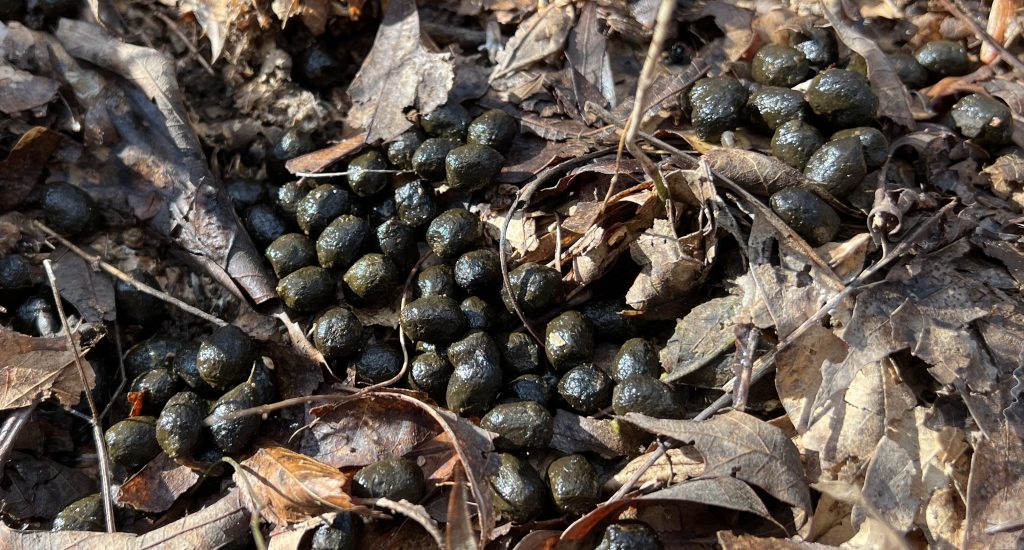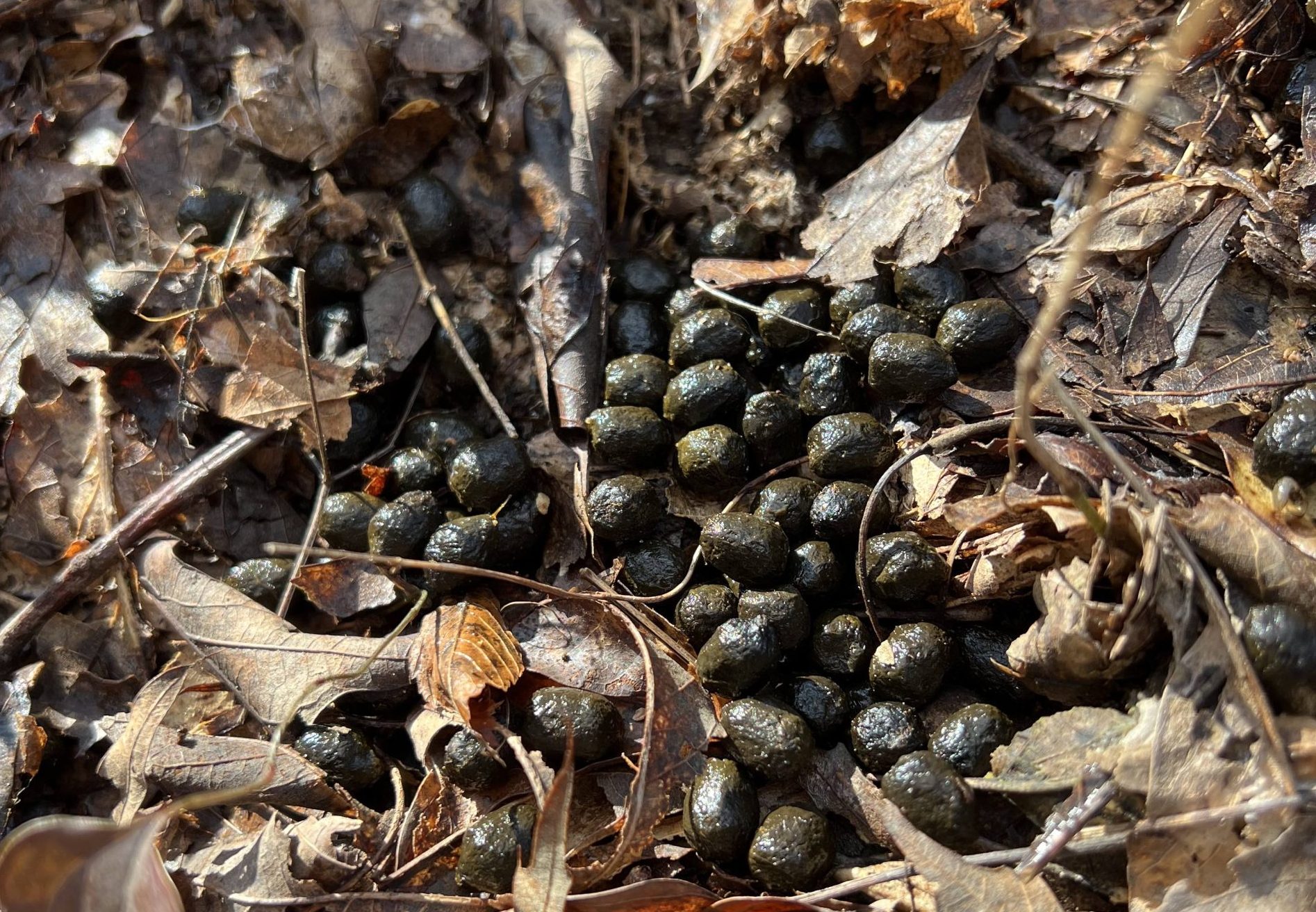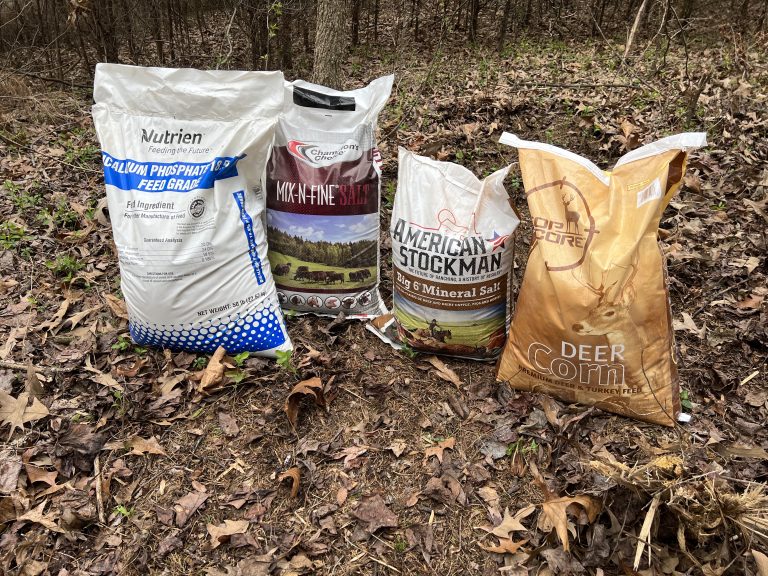Deer Poop: What does it look like? Everything you wanted to know about deer scat and more.
Have you been walking through the woods and noticed small, little brownish and black pellets laying on the ground? Deer are a common sight in many of our parks, woods and forests, but have you ever stopped to think about what they leave behind? Deer poop.
Are you a deer hunter and need to know what to look for while hunting? Deer poop can give you clues.
In this article, we’ll go over what deer poop looks like, where to find it and what you can learn from it.
Table of Contents
What does deer poop look like?
Deer poop is also known as deer scat, feces or droppings. Deer poop typically has a circular shape and are usually small pellets about 1/4″ in diameter. Since deer are herbivorous, they are often dark brown or black in color and may have small bits of undigested plant material visible.
For an animal the size of a deer, you would expect them to produce a much larger poop, but for their size, the pellets are very small. They are typically found in one pile all lumped together. The feces may also have a glossy or wet appearance and have a strong odor.
If you have ever field dressed and skinned a deer for the meat, you have seen the internal organs of a deer. The deer colon and sphincter is very small, which is why deer poop is round and produces a much smaller pellet.

Buck vs doe poop
Male deer produce much more poop pellets than female deer. The piles of poop can average 70-80 pellets for males and 50-60 for females.
On average, deer poop about 20 times a day. That means male deer poop an estimated 1600 poop pellets every day, while females poop an estimated 1200 poop pellets per day. That’s a lot of deer poop!
If you are a deer hunter and you see this much deer poop in the woods, you should get excited knowing that there’s deer in the area.
What does poop tell us
Piles of deer poop can give us visual clues about the deer itself, what it’s been eating and how long ago it was there.
If the deer poop or pellets look shiny and wet, you can assume the deer was there less than 12 hours. They also look darker when they are fresh. If the color is lighter and somewhat flaky or crusty, it is at least 3 days old.
Deer poop can carry chronic wasting disease
Chronic wasting disease is something that wildlife biologist are monitoring very closely. With the disease spread to 30 US states, it’s very alarming to hunters and wildlife officials.
Chronic Wasting Disease, also known as Zombie Deer Disease, is caused by a prion, an abnormal version of a protein that leads to the death of brain tissue. It’s deadly for the deer. It can also be transmitted via saliva and deer poop.
Fawns poop where momma deer says
Baby deer, also known as fawns, don’t poop whenever they are ready. They must be stimulated and told by momma doe deer when to go. Typically, the doe takes the fawn to a hideout and nurses the baby deer, stimulating the fawn to poop. Once the fawn poops, the momma deer will sometimes eat the feces of the fawn in order to hide and protect it while left alone to rest after nursing.
How does deer poop compare to other animals in nature?
Deer poop is very similar to other animals such as rabbits, goats and elk. Elk poop is similar but slightly larger than deer poop. The shape of the elk poop pellets is roughly the same, but just slightly larger in size. The color of elk poop vs deer poop is about the same dark brown to black, it depends on the timing of the year and what the animal has eaten.
If there’s poop, there’s deer
The bottom line is, if there’s deer poop around, then you have some deer on your property. For a hunter, it brings excitement seeing poop around your property and throughout the woods. It means there’s a congregation of deer that’s eating and living nearby. Signs of excessive droppings and multiple locations means the deer are feeding and possibly bedding in the area.








